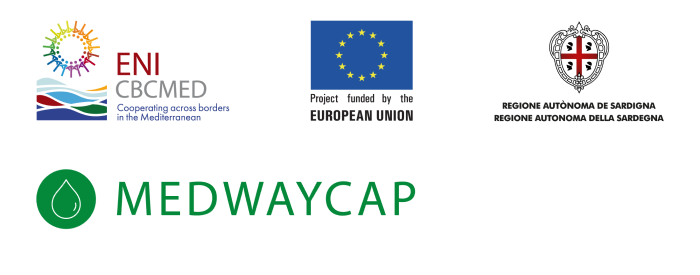First Name:
Paul
Last Name:
Refalo
Type of BP
Technical solution
Typology of Non- Conventional Water Resources (NCWR) What kind of NCWR do you deal with ?:
Greywater (GW)
What are the challenges raised by your Best Practice?
Overexploited groundwater, Low sustainability of the treatment system, Other (Please specify below)
Other challenges
carbon footprint of water
How could you describe your Best Practice?
In the proposed system, greywater from showers, baths and wash-hand basins is collected and treated using heterogeneous TiO2 photocatalysis.
Please describe your Best Practice in 5 keywords?
greywater, advanced oxidation, photocatalysis, domestic, circular economy
Please provide any links to useful documentations (including website)presenting your Best Practice
In which area has your Best Practice been implemented ?
Urban area
Best Practice location implementation (Country)
Malta
Localisation
POINT (14.486888 35.895639)
Who are the beneficiaries and/or the target group of your Best Practice ?
Other (Please specify below)
Other beneficiaries
Research
f the Best Practice has been implemented within a partnership, who were your partners ?
CNR, Econetique, Plastica Alfa, UniCT, MCAST
Have you involved stakeholders?
Yes
Please list them
EWA, REWS
What are the obstacles to implementation of Best Practice ?
Lack of an adequate regulatory framework, High cost of technological solutions, Other (Please specify below)
Other obstacles
relatively low electricity and water tariffs, zero cost of carbon emission
Did you receive funding for the research and development of the proposed BP?
Yes
Please indicate the source of funding
EU funding
Has your Best Practice been validated/upscaled?
Prototype is full scale, optimisation still in progress
Is there the potential to exploit/outscale the Best Practice?
Yes
Do you have or know any platform of sharing Best Practice that you would like to link to this inventory platform?
No
Does your Best Practice contribute to an innovation? If so, please provide a short description of the innovative component
Uses photocatalytic surfaces rather than powders.
Reduces environmental impacts, when compared to municipal water supply + treatment.
Size: micro.
Reduces environmental impacts, when compared to municipal water supply + treatment.
Size: micro.
What technolog(ies) and/or tool(s) has(ve) been used for your Best Practice ?
Photocatalysis - Advance oxidation
Please indicate the TRL associated with your Best Practice
TRL4 : Technology validated in lab
Flow rate (m3/day)
0.20
What is the necessary area to implement your Best Practice (m2) ?
2.00
Flow rate (m3/day) of treated NCW
0.20
Toilet Flushing, Garden Irrigation
Is your Best Practice economically viable ?
6
Is your Best Practice environmentally sustainable ?
10
If there was a sustainability assessment carried out, what are the result of this assessment ?
A life cycle assessment was carried out to compare the environmental impacts of an alternative water supply for toilet flushing in households with those of water currently supplied for this purpose through the municipal potable water network. In the proposed system, greywater from showers, baths and wash-hand basins is collected and treated using heterogeneous TiO2 photocatalysis. Several scenarios comprising different design and operating conditions were studied. Using the ReCiPe (H) 2016 method, the following environmental impact categories were assessed: global warming, stratospheric ozone depletion, terrestrial acidification, freshwater eutrophication, marine eutrophication, human carcinogenic toxicity, human non-carcinogenic toxicity, terrestrial ecotoxicity, freshwater ecotoxicity, marine ecotoxicity, and water consumption. The results show that for the water reuse device to be less impactful than the municipal water system in at least 7 of the selected impact categories by more than 20 %, the product between the number of reactors and the operating time should not exceed 8 reactors·h·day−1, also taking the influence of the UVA-LED's power into account. Of the 18 alternative scenarios analyzed, 14 present a potential for reducing the environmental impacts compared to the municipal water supply system in at least 7 of the 11 evaluated environmental impact categories. For instance, the municipal supply of one cubic meter of water and its subsequent wastewater treatment in the baseline scenario produces 4.21 kg CO2 eq·m−3, whereas only 1.62 kg CO2 eq·m−3 are produced in the optimum scenario of the greywater reuse system. Moreover, the use of solar photovoltaic panels as a source of electricity for the systems is found to be an effective measure to further improve the environmental performance, mainly for the impact categories of global warming, stratospheric ozone depletion, and terrestrial acidification. The study also highlights the benefits of recycling components and materials in the end-of-life stage of the proposed system.
Please indicate the other various social impact of your Best Practice :
Preservation of living environment, Improvment of health conditions, Sustaining natural ecosystems
To which Sustainable Development Goals (SDGs) your Best Practice contributes?
SDG6: Clean Water and Sanitation, SDG7: Affordable and Clean Energy, SDG9: Industry, Innovation and Infrastructure, SDG11: Sustainable Cities and Communities, SDG12: Responsible Consumption and Production, SDG13: Climate Action, SDG14: Life Below Water
Have you any recommendation to add?
https://microwatts-water.com/wp-content/uploads/2021/09/MicroWatTs-full.mp4?_=1
Please indicate the acronyms of used &/or developed technologies/Tools:
Others
